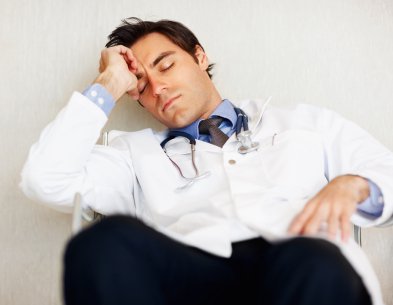Physician burnout rate increases, broad-based approaches alleviate causes
The rate of physician burnout increased 5% during a 3-year period, according to findings recently published in JAMA Network Open.
Researchers also wrote that reversing the burnout symptoms requires a local and centralized approach involving individuals and leadership.
“Physician burnout is negatively associated with altruism, professionalism and quality and safety of care. At the individual level, physician burnout has been associated with cardiovascular disease, alcohol use, depression, suicide and shorter life expectancy. Burnout has also been implicated as having an adverse financial impact on practices and organization,” Marcela G. del Carmen MD, MPH, of the Massachusetts General Physicians Organization in Boston, and colleagues wrote.
Researchers reviewed 1,774 surveys conducted from May 16 to June 15, 2014, and 1,882 surveys conducted among members of the Massachusetts General Physicians Organization from May 16 to June 15, 2017, to measure trends and determine factors tied to physician burnout.
They found that the rate of burnout increased from 40.6% to 45.6%, which was associated with increases in exhaustion and cynicism. Physicians practicing 10 years or less were more vulnerable to burnout vs. those practicing between 11 and 20 years and more than 30 years. Multivariate analysis showed that factors associated with burnout in the early-career group included poor career fit, command over work environment, quality of clinical care provided, and satisfaction with department leadership.
“These findings point to potential opportunities in this vulnerable group to mitigate burnout, such as initiatives that promote community building and networking and harnessing effective leadership,” del Carmen and colleagues wrote.

“Addressing factors associated with burnout identified in our study and extensively documented in the literature will necessitate a shared commitment from both health care organizations and individual physicians. Furthermore, efforts to enhance and maintain connectivity among physicians are also critical,” they added.
Del Carmen and colleagues’ findings appear to conflict with those recently published in Mayo Clinic Proceedings. In that study, Tait D. Shanafelt, MD, of the department of medicine at Stanford University and colleagues found that 42.7% of surveyed physicians reported satisfaction with work-life integration in 2017, compared with 40.9% in 2014 and 48.5% in 2011. The Shanafelt study was based on a larger, nationwide sample of physicians. – by Janel Miller
Disclosures: The authors report no relevant financial disclosures.

